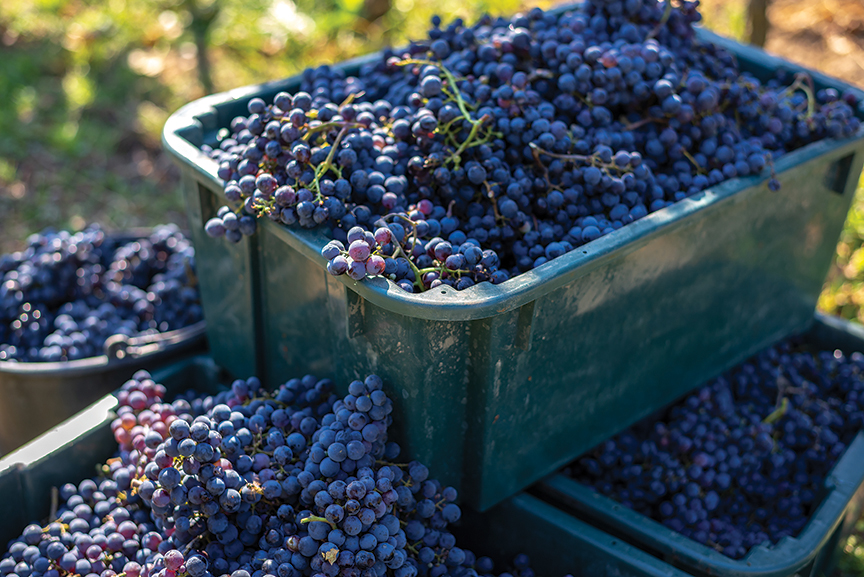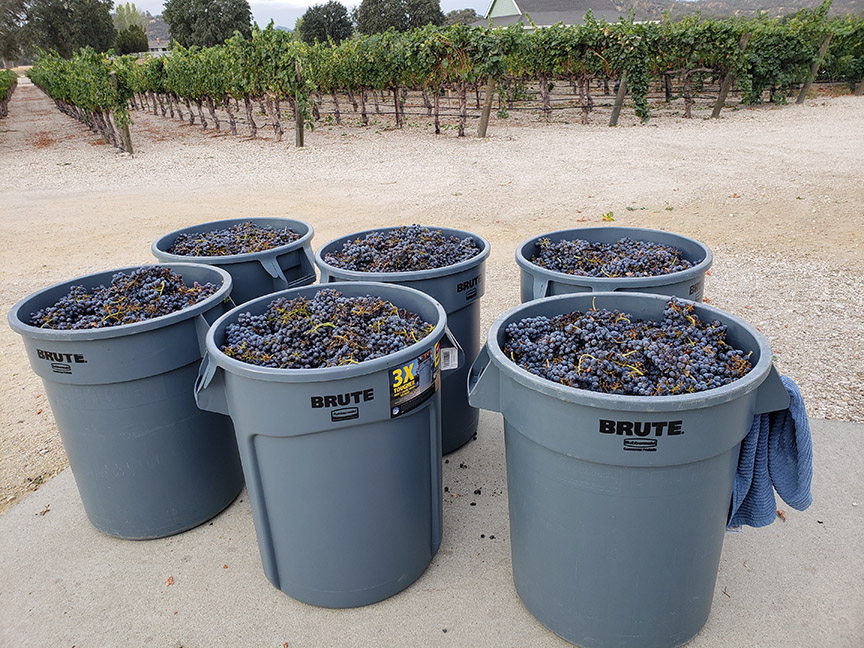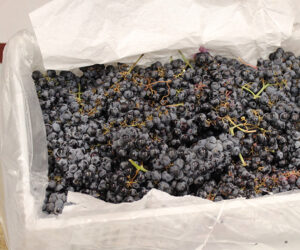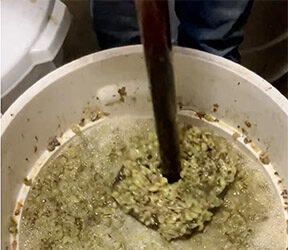As a passionate home winemaker, my journey into the world of grape sourcing has been both challenging and rewarding. Over the years, I’ve learned valuable lessons about the importance of selecting high-quality grapes and establishing reliable sources. I have often bought grapes for my small-batch winemaking hobby directly from vineyards since I live in wine country. Though, it hasn’t always been easy. Allow me to take you through my experiences, from the early days of uncertainty to the moments of triumph when I finally found my ideal grape supplier.
In the world of home winemaking, the process of grape sourcing is often overlooked by beginners, myself included. When I first ventured into winemaking, I was eager to dive into the fermentation process without fully grasping the significance of grape selection. Like many novices, I assumed that any wine grapes would suffice for making wine.

My earliest memories of grape sourcing date back to the early 1980s when I embarked on trips with my future father-in-law, Joe Braz, to Rancho Cucamonga, California. Nestled near the foothills of the San Gabriel Mountains, this region boasted a rich history of winemaking. Together, we would journey to Galleano Winery in his trusty 1962 Ford pickup, ready to load up one ton of grapes to turn into wine. These trips were not just about procuring grapes; they were an education in the winemaking process passed down through generations.
Fast forward to the early 2000s, and I found myself facing the daunting task of grape sourcing as an independent home winemaker. Living in San Diego, California, I was surrounded by wineries and vineyards, yet finding a reliable source of grapes proved to be more challenging than anticipated. With no formal connections in the wine industry, I relied on trial and error to navigate through the grape procurement process.
My initial attempts at sourcing grapes were met with frustration and disappointment. Despite reaching out to wineries in the nearby Temecula area, I struggled to secure grapes in the small 100-lb. (45 kg) quantity I desired. Most wineries were hesitant to accommodate small-scale buyers like myself, preferring to cater to larger clients with bulk orders. As a result, I often found myself compromising with leftover grapes from the main harvest that lacked the quality and freshness necessary for producing fine wine.
It was in 2007 that I stumbled upon a promising opportunity to purchase grapes from a winery in Temecula. Teaming up with a colleague from work who knew the owner, we decided to split a larger purchase of Cabernet Sauvignon grapes. While the grapes themselves proved to be of decent quality, our lack of experience in the winemaking process resulted in less-than-stellar wines. It was a humbling experience that underscored the importance of both grape selection and winemaking technique.
Undeterred by setbacks, in 2012 I continued to explore different avenues for grape sourcing, including local vineyards in San Diego County. With a very late start to making any arrangements, I was in contact with a vineyard in Julian, a quaint mountain town northeast of San Diego. After returning from a business trip, I called and found out they sold out the day before. They referred me to a vineyard in Potrero (an hour east of San Diego, near the Mexican border), which was quite the memorable experience. Little did I know that this journey would test both my patience and my resilience as a winemaker. Upon arriving in Potrero, I was met with the harsh reality of late-season grape sourcing. Many vineyards had already been picked clean by other buyers, leaving me with slim pickings. Determined to salvage what I could, I found myself trudging through vineyards with my wife, son, and his girlfriend, hand-picking remnants of Primitivo and Chardonnay grapes. It was a laborious task that left us scratched, sticky, and swarmed by bees. Despite the challenges, we managed to gather enough grapes to salvage our winemaking ambitions, albeit with a newfound appreciation for the toil involved in grape harvesting.
In the years that followed, I continued to attempt to improve my approach to grape sourcing, seeking out new strategies and resources to better the quality of my wines. One significant turning point came in 2013 when I discovered the benefits of working with a grape distributor based in Northern California. This newfound partnership offered convenience and variety, allowing me to explore a wide range of grape varietals from different regions of California. However, while the distributor provided a reliable source of grapes, I soon realized that consistency in quality was still elusive, and the cost was from $1.50–$2/lb., twice what I was previously paying. There was no control over the day of delivery, and it became apparent all the grapes must have been stored in a warehouse until all were ready to be delivered on one date.
By 2018, determined to raise the bar in my winemaking pursuits, I sought out opportunities for education and training in the field of viticulture and enology. Enrolling in winemaking classes at a local community college and attending workshops at UC-Davis, I gained valuable insights into the science and art of winemaking. In the Step-by-Step Winemaking Class at UC-Davis, they list the keys to great wine are: Great grapes, temperature control, and microbial control. It was during these educational experiences that I came to appreciate the importance of starting with great grapes as the foundation for exceptional wine.
Armed with newfound knowledge and a renewed sense of purpose, I embarked on a mission to find my ideal grape supplier in 2019. Three to four months prior to harvest, focusing my search on the Central and Northern California regions, I honed in on Paso Robles as a potential source of premium grapes due to the closer proximity (6-hour drive vs. 10-hour drive to Napa), and exceptional grapes in the varieties I enjoy.
With 300+ wineries and vineyards in Paso Robles, I had to take a new approach. I started by calling the local chamber of commerce for help, which pointed me to a wine association, which then led me to a listing of wineries/vineyards that sold grapes called Independent Grape Growers of the Paso Robles Area (IGGPRA); I felt like I struck gold. The group includes some wineries, but more importantly for me, it includes independent vineyards that sell to the wineries and others. This site outlined who sold what type of grape, pricing by ton, sometimes a minimum, plus contact information. I drafted an email that outlined all my parameters, including “freshly picked,” a quantity of 250 lbs. (113 kg), my type of bin for transport (Brute 20-gallon/76-L food-grade containers). I knew this would limit who would want to deal with me so I cast a wide net and sent out about 30 emails. Some were ignored, some responded no. Some said they would sell to me if I bumped my order up to a half ton, and about four responded positively to my purchase requests. I then called and spoke to those sellers and narrowed it down to two.
In the end, I selected Johnson Vineyards, in a small town just north of Paso Robles. In talking with Rob Johnson (owner), I found him very helpful and he seemed to understand the plight of the small home winemaker. After my previous issues of picking grapes, we also discussed the picking parameters, as I did not want to pick my own. Some places may pick the grapes and have them ready, while others may expect you to pick what you want, or give an option. Johnson Vineyards normally secures their own pickers, which need to be scheduled in advance, which worked for me.

It is essential to be transparent about your expectations and requirements. With no formal contract required, I secured a commitment to purchase 250 lbs. (113 kg) of grapes directly from the vineyard, bypassing the need for a distributor and reducing costs in the process. I’ve found that maintaining regular communication with the vineyard owner leading up to harvest is crucial. This includes checking in periodically for updates on the grape ripening process, monitoring weather conditions, Brix levels, and confirming the estimated harvest date. During the summer I would email the owner once a month, and as harvest approached our communications increased, however the owner was very good about sending vineyard updates via email, negating the need for me to initiate much contact.
In my experience, there is some flexibility on the pick date, based on the ideal Brix for the grapes. I would receive pretty good approximate harvest ranges in early fall, and with less than a week’s notice, we would agree upon a date, which would allow Rob to secure the pickers in advance.
Once the final harvest pick-up date was determined, we made a 2-day trip out of it and arrived a day early, explored some wineries and spent the night nearby so we could get the grapes first thing the next morning.
We met the owner by 6:30 a.m. the following morning, toured the vineyard, tested selected grapes with my refractometer; they even had breakfast for us. The pickers picked while it was still very cool in the morning, we helped weigh & load the grapes into my Brute containers and then into the back of my vehicle. We put on the lids, tied them down for stability, placed a damp beach towel over the top for protection from direct sunlight, and kept the air conditioner at a comfortable temperature for us. We were done by 10 a.m. and on the road. The grapes remained very cool throughout
the process.
That year I selected Zinfandel and Pinot Noir (both of which do well in the area). These were the most perfect grapes I had seen in years; full clusters, sweet to the taste, no bugs in the bunch. The owners made the experience of buying the grapes fantastic.
Five harvests later and I continue to purchase all my grapes from Johnson Vineyards and always enjoy going up to the vineyard and spending time with the owners.
So, what have I learned in my years of searching for great grapes directly from the source?
• Use a network to find grape sources. This can include friends, fellow winemakers, wine or vineyard associations, grape co-ops, wine tasting groups, local universities with agriculture departments, and winemaking supply stores.
• Make early contact (May/June) for Sep/Oct harvest.
• Verify pricing based on quantity to purchase (as lower quantities could be more expensive).
• Verify pick-up parameters and type of containers you’re using.
• Check with the grower’s criteria for picking to ensure compatibility with your desires.
• Keep in touch and follow the development of the grapes.
• Be flexible on date of harvest as no one can predict harvest date with total accuracy until it is very close.
While the path to finding the perfect grapes may be fraught with challenges, the rewards of creating something truly remarkable make every obstacle worth overcoming. In closing, I offer my fellow home winemakers a word of encouragement: Embrace the journey, savor the process, and never lose sight of the magic that happens when great grapes meet skilled hands.







